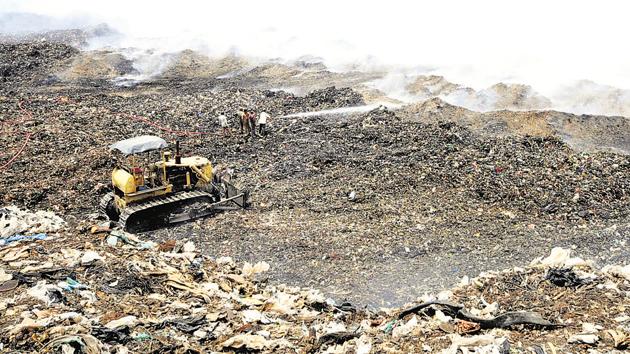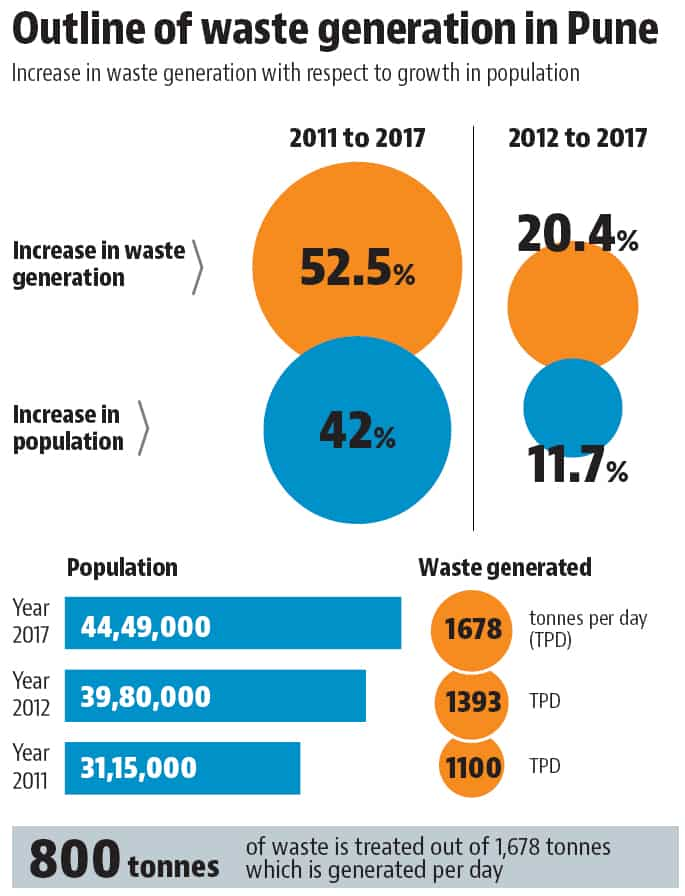City raising a stink is not all garbage
The Solid Waste Management Strategy by the Pune Municipal Corporation takes into account strategies to be employed for waste management in the city from 2017 to 2025. It prioritises trash segregation and capacity enhancement of the existing waste processing units but activists raise doubts over its implementation.
The recent agitation at Uruli Devachi and Phursungi village has once again alerted the city about the imminent garbage problem, which is increasing by the day. Although the Pune Municipal Corporation (PMC) has devised a plan to combat the issue, discrepancies in measures of garbage management with respect to the growing population raise concerns regarding the feasibility of the implementation of the plan.

The Solid Waste Management Strategy takes into account strategies to be employed by the PMC from 2017 to 2025. It prioritises trash segregation and capacity enhancement of the existing waste processing units. Deputy municipal commissioner Suresh Jagtap, who has been guiding the solid waste management department said, “We have spent a month to strategise, discuss and create this plan. It includes both short and long-term solutions to the city’s garbage problems.”
Within this plan, a graph outline of waste generation from 2012 to 2017 has been provided.It shows a 20.4 per cent increase in waste generation, with a rise of 11.7 per cent in population. In 2012, it claims to have generated 1393 tonnes of waste per day (TPD) with a population of 39,80,000, and now in 2017, Pune generates 1678 tonnes of waste per day with a population of 44,49,000.
However, Census records of 2011 show Pune’s population to be 31,15,000 with a waste generation of 1100 TPD, suggesting a 42 per cent rise in population and 52.5 per cent rise in waste generation in the past 6 years. This is different from the 5 year plan which states a 11 per cent increase in population and 20 per cent increase in waste generation.
“The per capita waste is calculated by the trash that is collected by waste pickers, ghanta gadis or landfills. This is then divided by the population. Any case of discrepancy in the figures of population can directly influence the total amount of waste generated in a day,” a SWaCH representative pointed out.
The recent figures further exclude the rising population of migrants which is adding to the garbage problems in the city. In the Environment Status Report (ESR) of 2015-16, PMC predicted a 10 per cent rise in migrant population from 2016-2021. As opposed to the previous figures of current population, the report claims to hold a population of 44,55,000 in Pune in the year 2017.
Although the discrepancies in numbers might not seem high, the impact it could have in terms of waste generation on an average scale is problematic.
Major Gen (Retd) SCN Jatar of Nagrik Chetna Manch said, “These are factual errors, which to some extent show the practical errors in the implementation. No substantiation or source of this information is being provided by the PMC. The audit report of 2015 showed 1250 TPD but their report shows 1558 tonnes of waste collected everyday.”

As suggested by numbers, the ever-increasing population and the dearth of space for more collection and treatment is one of the biggest problems that Pune is facing. Architect Purva Keskar and a trustee at Sustainability Initiatives said, “What one needs to understand is that with population increasing in our city, we do not have any more space to dispose off the garbage and our processing plants are running at full capacity. This means that more garbage is being generated than being processed.”
This problem is yet to be clearly addressed by the corporation. The PMC is also planning more citizen engagement programmes, intensive campaigns on source segregation and identifying one “Swachhata mitra’ for every 250 housing societies. These individuals will provide feedback to PMC on door-to-door and source segregation. The corporation will also introduce citizen awards for innovative solutions for waste management at various levels.





